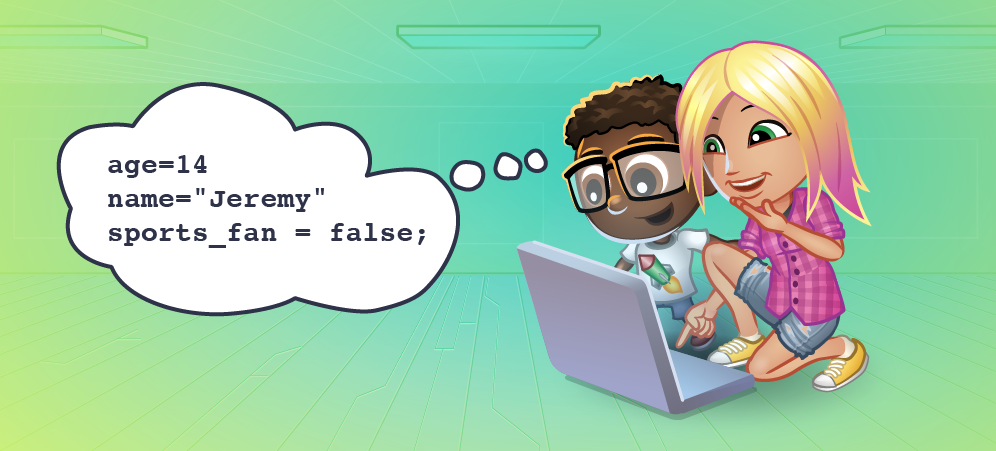
In the realm of children’s education, the significance of coding instruction is increasingly evident. Recognizing the pivotal role coding plays in shaping future career opportunities and fostering critical thinking skills, there is a growing emphasis on introducing coding education to children from an early age. As we delve into this educational landscape, it becomes imperative to explore the integration of emerging technologies that are revolutionizing the way children learn to code. This blog sets the stage for an enlightening journey, providing a succinct overview of why coding education is crucial for young minds and introducing the exciting realm of emerging technologies that are at the forefront of transforming how children engage with coding concepts.
Gamification in Children’s Coding Education
Gamification stands as a dynamic force in revolutionizing children’s coding education, infusing an element of playfulness into the learning process. At its core, gamification involves incorporating game-like elements, such as challenges, rewards, and interactive features, into educational activities. Noteworthy examples of gamified coding platforms, like Tynker, have emerged as powerful tools in this transformative journey. These platforms leverage engaging narratives, characters, and game mechanics to teach coding principles in a captivating manner. The benefits of gamification are profound, as it captivates young learners by making the educational experience inherently enjoyable and interactive. Through gamification, children are not merely acquiring coding skills but are actively immersed in the learning process, fostering a deeper understanding of key concepts and enhancing problem-solving abilities. This innovative approach is leaving a lasting impact on children’s coding skills, ensuring that the journey of learning to code is as stimulating as it is educational.
Augmented Reality (AR) in Children’s Coding Education
Augmented Reality (AR) has emerged as a cutting-edge tool in children’s coding education, bringing a new dimension to the learning experience. AR overlays digital elements onto the real world, providing an immersive and interactive environment for learners. In the realm of coding education, numerous applications showcase the power of AR, such as enabling children to visualize code structures in three dimensions or interact with virtual coding components in their physical surroundings. The advantages of incorporating AR into coding education are manifold, offering a hands-on and visually engaging approach that enhances comprehension and retention of coding concepts. This technology goes beyond traditional methods by allowing children to see the direct application of their code in a tangible way, fostering a deeper understanding of programming principles. Notably, Tynker’s Introduction to AR course exemplifies this innovative approach, guiding young learners through the exciting intersection of coding and augmented reality, providing them with the tools to create their own AR experiences and paving the way for a future where coding education is both enriching and technologically advanced.

Artificial Intelligence (AI) in Children’s Coding Education
Artificial Intelligence (AI) is making waves in the realm of children’s coding education, offering young minds a glimpse into the future of technology. This innovative approach involves introducing children to the fundamental concepts of AI, empowering them to understand and harness the capabilities of intelligent systems. Tynker’s Introduction to AI course stands out as a pioneering resource in this field, providing a comprehensive and accessible platform for children to explore the intricacies of AI. Through interactive lessons and hands-on activities, Tynker’s course demystifies complex AI concepts, making them approachable for young learners. By delving into real-world applications and engaging projects, children not only grasp the basics of AI but also gain valuable problem-solving and critical-thinking skills. Tynker’s commitment to integrating AI into its coding curriculum reflects a forward-thinking approach, ensuring that the next generation is well-prepared to navigate and contribute to the evolving landscape of artificial intelligence.

Shaping the Future of Coding Education
As we contemplate the future of coding education, the overall impact of emerging technologies looms large, promising to redefine the way children engage with programming concepts. The integration of gamification, augmented reality, and artificial intelligence not only makes coding education more engaging but also equips children with essential skills for navigating the challenges of the digital world. These technologies foster a dynamic learning environment that encourages creativity, critical thinking, and problem-solving – attributes crucial in an increasingly digital and interconnected society. However, as we embrace these advancements, it is imperative to address potential concerns and ensure a balanced approach. Striking a harmonious balance between technological integration and foundational principles ensures that coding education remains holistic, fostering a comprehensive skill set in children. Furthermore, the transformative power of technology should be harnessed to encourage inclusivity and diversity in coding education, breaking down barriers and ensuring that all children, regardless of background, have equal access to the opportunities presented by the digital landscape.
Coding for Kids Related Searches
Artificial Intelligence Coding
Check out Tynker’s Curriculum and learn more about inspiring the next generation to change the world through code.




